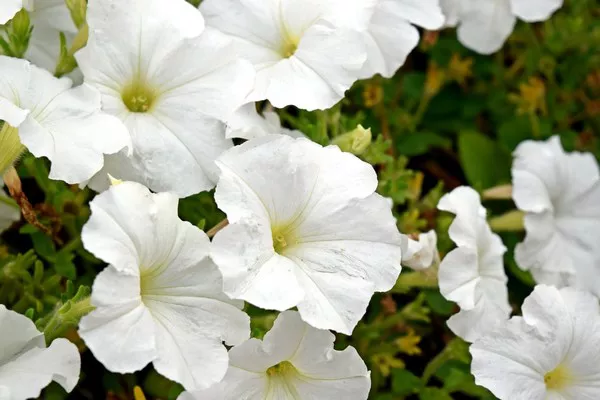Each month of the year is associated with a unique birth flower, symbolizing the characteristics and sentiments of individuals born during that time. For those fortunate enough to celebrate their birthdays in December, the birth flower is the enchanting narcissus. This article delves into the significance of the December birth flower, the fascinating history and mythology behind it, which add depth to this floral celebration.
The December Birth Flower: Narcissus Unveiled
Narcissus, often referred to as the “December daffodil,” is the birth flower for individuals born in December. This elegant flower is characterized by its delicate petals and vibrant hues, making it a fitting representation of the winter season. Narcissus flowers are known for their unique appearance, with a central corona surrounded by six petal-like tepals. They come in various colors, including white, yellow, and orange, adding a touch of warmth to the winter landscape.
Symbolism and Meaning of Narcissus
The symbolism of the narcissus flower extends beyond its physical beauty. Here are some of the meanings associated with this exquisite bloom:
1. Renewal and Rebirth: The narcissus flower emerges during the cold months of winter, symbolizing renewal and the promise of spring to come. Its appearance signifies the cycle of life, growth, and rebirth.
2. Hope and Optimism: Narcissus blooms are a beacon of hope and optimism, reflecting the anticipation of brighter days ahead even in the darkest times.
3. Self-Esteem and Self-Love: The name “narcissus” is derived from the Greek myth of Narcissus, a character who fell in love with his own reflection. This association reflects themes of self-esteem, self-love, and self-awareness.
The Mythological Origins of Narcissus
The story of Narcissus is deeply woven into the mythology of ancient Greece and offers insight into the flower’s symbolism:
According to Greek mythology, Narcissus was a beautiful youth who was admired by many, including the nymph Echo. However, Narcissus rejected all expressions of love, leading to Echo’s heartbreak. In retaliation, the goddess Nemesis cursed Narcissus, causing him to fall in love with his own reflection in a pool of water. Unable to reach his own image, Narcissus withered away beside the pool, eventually transforming into the flower that now bears his name.
Narcissus in Art and Literature
The allure of narcissus has inspired artists, poets, and writers for centuries. Its timeless elegance and layered symbolism have made it a subject of creativity across various mediums:
1. Literary References: Numerous poets and authors have woven the narcissus flower into their works. From William Wordsworth’s “Lines Written in Early Spring” to the classical mythological tales, narcissus appears as a recurring motif, adding depth and meaning to their narratives.
2. Paintings and Illustrations: Narcissus has been depicted in paintings, illustrations, and decorative arts throughout history. Its delicate form and vibrant colors make it a captivating subject for visual representation.
3. Symbolism in Visual Arts: In the language of flowers, narcissus often symbolizes themes of beauty, rebirth, and self-discovery. Artists use these connotations to convey emotions and narratives in their creations.
Cultural Significance
1. Religious Symbolism: In Christianity, the narcissus flower is sometimes associated with the Virgin Mary and purity. Its emergence from the cold earth into a beautiful blossom mirrors the story of Mary’s Immaculate Conception.
2. Festivals and Celebrations: The narcissus flower is celebrated in various cultural festivals around the world. For example, in Iran, it holds significance during the Nowruz (Persian New Year) celebrations, symbolizing renewal and the arrival of spring.
3. Botanical Interest: Narcissus plants have captured the attention of botanists and horticulturalists due to their diverse species and hybrid variations. These professionals continuously study and cultivate narcissus to preserve its unique qualities.
Caring for December Birth Flowers
To honor the December birthday celebrants with the gift of narcissus flowers, it’s essential to provide proper care for these delicate blooms:
1. Choosing Fresh Blooms: Select narcissus flowers with firm stems and unopened buds. This ensures that the blooms will last longer once they are brought indoors.
2. Watering: Place narcissus flowers in a vase with clean water. Change the water every few days to prevent the growth of bacteria that can shorten the flowers’ lifespan.
3. Trimming Stems: Trim the bottom of the stems at a diagonal angle before placing them in water. This enhances water absorption, keeping the flowers hydrated.
4. Avoid Direct Sunlight: Place the vase of narcissus flowers in a location away from direct sunlight, as excessive heat can cause the flowers to wilt prematurely.
Conclusion
The December birth flower, the narcissus, encapsulates the essence of renewal, optimism, and self-love. Rooted in mythology and rich in symbolism, this elegant bloom serves as a fitting tribute to individuals born in the winter month of December. By understanding the story behind the flower and embracing related topics, such as flower care, symbolism, and plant cultivation, you can enhance the celebration of December birthdays with a meaningful and cherished gift of narcissus blooms.


